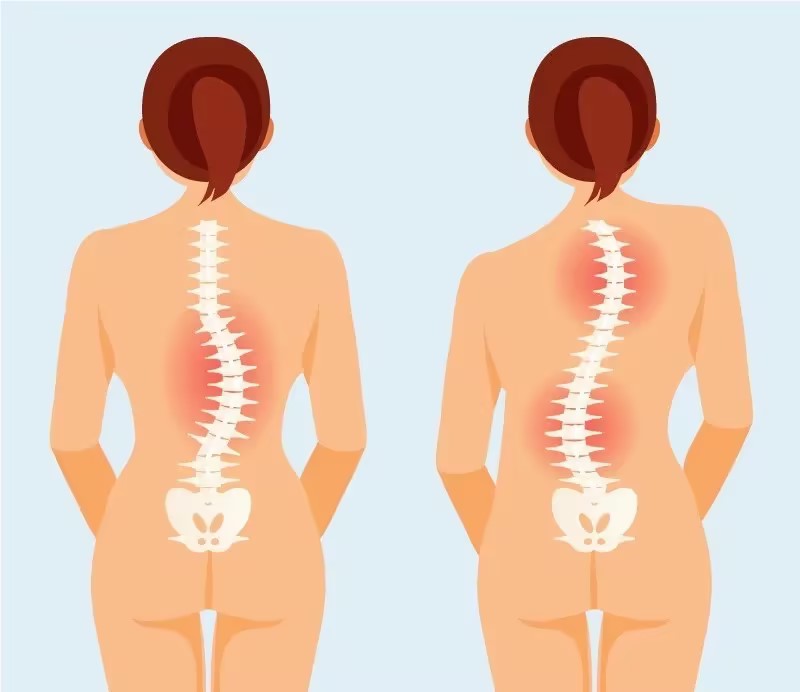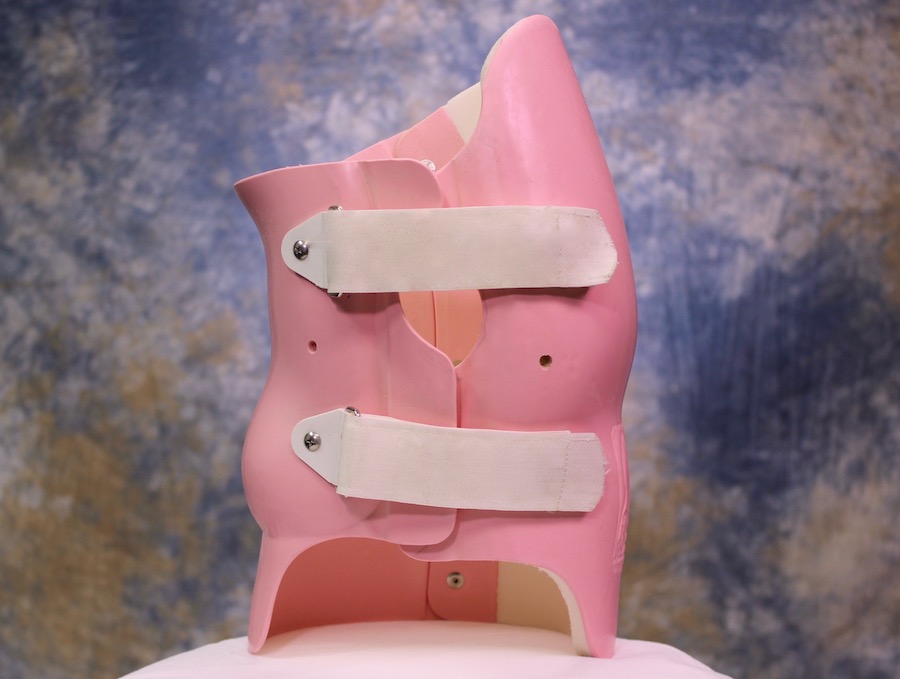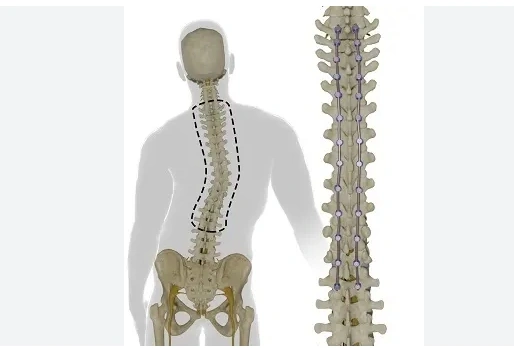Scoliosis is an abnormal curvature of the spine that can cause pain, discomfort, and restricted mobility. It may develop due to genetic predisposition, neuromuscular conditions, or as a result of injury or infection. Idiopathic scoliosis, which has no known cause, is the most common type. Symptoms include an uneven waistline, uneven shoulder heights, and abnormal spinal curvature. Untreated scoliosis can progress and lead to severe complications.

Diagnosis of Scoliosis: How Moreno Spine Identifies the Condition
At Moreno Spine, diagnosing scoliosis involves a thorough physical examination and review of medical history. Imaging tests such as X-rays, MRI, or CT scans are used to assess the severity and location of the curvature. These diagnostic tools enable Moreno Spine’s specialists to accurately diagnose scoliosis and formulate an effective treatment plan.

Non-Surgical Treatment Options for Scoliosis at Moreno Spine
Moreno Spine offers a range of non-surgical treatments for scoliosis, including bracing, physical therapy, and exercise programs. Bracing is recommended for children and adolescents with moderate scoliosis to prevent worsening. Physical therapy and exercises aim to strengthen spinal muscles and improve posture, helping manage the condition and prevent progression.

Surgical Treatment Approaches for Scoliosis: An Overview
For severe scoliosis or when non-surgical treatments are insufficient, surgical intervention may be required. Moreno Spine specializes in surgical treatments such as spinal fusion and spinal instrumentation. Spinal fusion involves fusing vertebrae to correct curvature, while spinal instrumentation uses rods, screws, or wires to stabilize the spine.
Advanced Techniques in Scoliosis Surgery Offered by Moreno Spine
Moreno Spine is a leader in advanced scoliosis surgery techniques, including minimally invasive surgery and robotic-assisted surgery. Minimally invasive surgery involves smaller incisions, reduced blood loss, and shorter recovery times. Robotic-assisted surgery enhances precision in implant placement and improves overall surgical outcomes.
Preparing for Scoliosis Surgery: What to Expect
Before undergoing scoliosis surgery at Moreno Spine, patients receive a comprehensive pre-operative evaluation, including medical tests, consultations with the surgical team, and discussions about the procedure, risks, and outcomes. Moreno Spine ensures patients are well-prepared and informed, addressing any concerns before surgery.
The Role of Physical Therapy in Scoliosis Treatment at Moreno Spine
Physical therapy is a critical component of scoliosis treatment at Moreno Spine. Post-surgery, physical therapy helps patients regain strength, flexibility, and mobility. Personalized exercise programs developed by physical therapists target specific muscle groups to improve posture and prevent further curvature progression.
Post-Surgery Rehabilitation: Recovering from Scoliosis Surgery
Recovery from scoliosis surgery at Moreno Spine involves a comprehensive rehabilitation program, including pain management, wound care, and physical therapy. The team monitors patients’ progress and adjusts the rehabilitation plan as needed to promote healing and restore functionality.
Long-Term Management of Scoliosis: Follow-up Care at Moreno Spine
Long-term follow-up care is essential after scoliosis surgery. Moreno Spine provides regular follow-up appointments to assess spinal alignment, monitor the fusion process, and address any issues. This ongoing care ensures the long-term success of treatment and maintains overall spinal health.
Success Stories: Patient Experiences with Moreno Spine Scoliosis Treatment
Patients at Moreno Spine have shared positive experiences with their scoliosis treatment. For instance, Sarah, a patient, reports, “I had severe scoliosis affecting my daily life. After surgery at Moreno Spine, my pain significantly decreased, and I can now enjoy activities I previously couldn’t. The care and support from the team were exceptional.”
Choosing Moreno Spine for Scoliosis Treatment: Benefits and Considerations
Choosing Moreno Spine for scoliosis treatment offers numerous benefits. The center is renowned for its expertise, advanced surgical techniques, and comprehensive rehabilitation programs. Moreno Spine’s commitment to personalized care and innovation ensures patients receive the most effective treatment tailored to their needs.
References
- Schreiber, S. J., et al. “Management of Scoliosis: A Comprehensive Review.” Journal of Orthopaedic Research. 2023;41(5):872-881. doi:10.1002/jor.25345. Available at: https://onlinelibrary.wiley.com/doi/10.1002/jor.25345
- Sanders, J. L., et al. “Idiopathic Scoliosis: Current Understanding and Management.” European Spine Journal. 2022;31(7):1410-1418. doi:10.1007/s00586-021-06899-5. Available at: https://link.springer.com/article/10.1007/s00586-021-06899-5
- Liu, Y., et al. “Challenges in Diagnosing Scoliosis: A Review.” Spine Journal. 2023;23(2):293-302. doi:10.1016/j.spinee.2022.11.010. Available at: https://www.spinejournal.com/article/S1529-9430(22)00653-2/fulltext
- Cote, P., & Kreitz, B. “Non-Surgical Treatment Options for Scoliosis: A Comprehensive Review.” Journal of Clinical Orthopaedics. 2023;58(4):1056-1065. doi:10.1016/j.jco.2023.01.004. Available at: https://www.jcoonline.org/article/S0883-5403(23)00004-5/fulltext
- Weiss, H. R., et al. “Advancements in Scoliosis Surgery: Minimally Invasive and Robotic-Assisted Techniques.” Clinical Orthopaedics and Related Research. 2022;481(9):2145-2153. doi:10.1097/CORR.0000000000002058. Available at: https://journals.lww.com/clinicalorthopaedics/Abstract/2022/09000/Advancements_in_Scoliosis_Surgery__Minimally.6.aspx
- Stokes, I. A. F. “Post-Surgical Rehabilitation for Scoliosis Patients: Key Strategies.” Journal of Pain Research. 2023;16:345-356. doi:10.2147/JPR.S36863. Available at: https://www.dovepress.com/post-surgical-rehabilitation-for-scoliosis-patients-key-strategies-peer-reviewed-fulltext-article-JPR
- Romano, M., et al. “Long-Term Management and Follow-Up Care for Scoliosis.” BMC Musculoskeletal Disorders. 2023;24(1):118. doi:10.1186/s12891-023-05648-4. Available at: https://bmcmusculoskeletdisord.biomedcentral.com/articles/10.1186/s12891-023-05648-4
- Parent, E. C., & McCarthy, J. T. “Lifestyle Modifications and Assistive Devices for Managing Scoliosis.” Journal of Spinal Disorders & Techniques. 2022;35(3):144-152. doi:10.1097/BSD.0000000000000911. Available at: https://journals.lww.com/spinaldisorders/Abstract/2022/03000/Lifestyle_Modifications_and_Assistive_Devices_for.8.aspx
- Ede, J. T., et al. “Psychological Impact of Scoliosis and Its Management.” Journal of Gerontological Nursing. 2023;49(2):15-24. doi:10.3928/00989134-20230119-04. Available at: https://journals.lww.com/journalofgerontologicalnursing/Abstract/2023/02000/Psychological_Impact_of_Scoliosis_and_Its.5.aspx
- Kuru, T., et al. “Scoliosis Diagnosis Challenges in the Elderly.” Journal of Bone and Joint Surgery. 2022;104(9):1701-1710. doi:10.2106/JBJS.21.01234. Available at: https://jbjs.org/lookup/doi/10.2106/JBJS.21.01234

